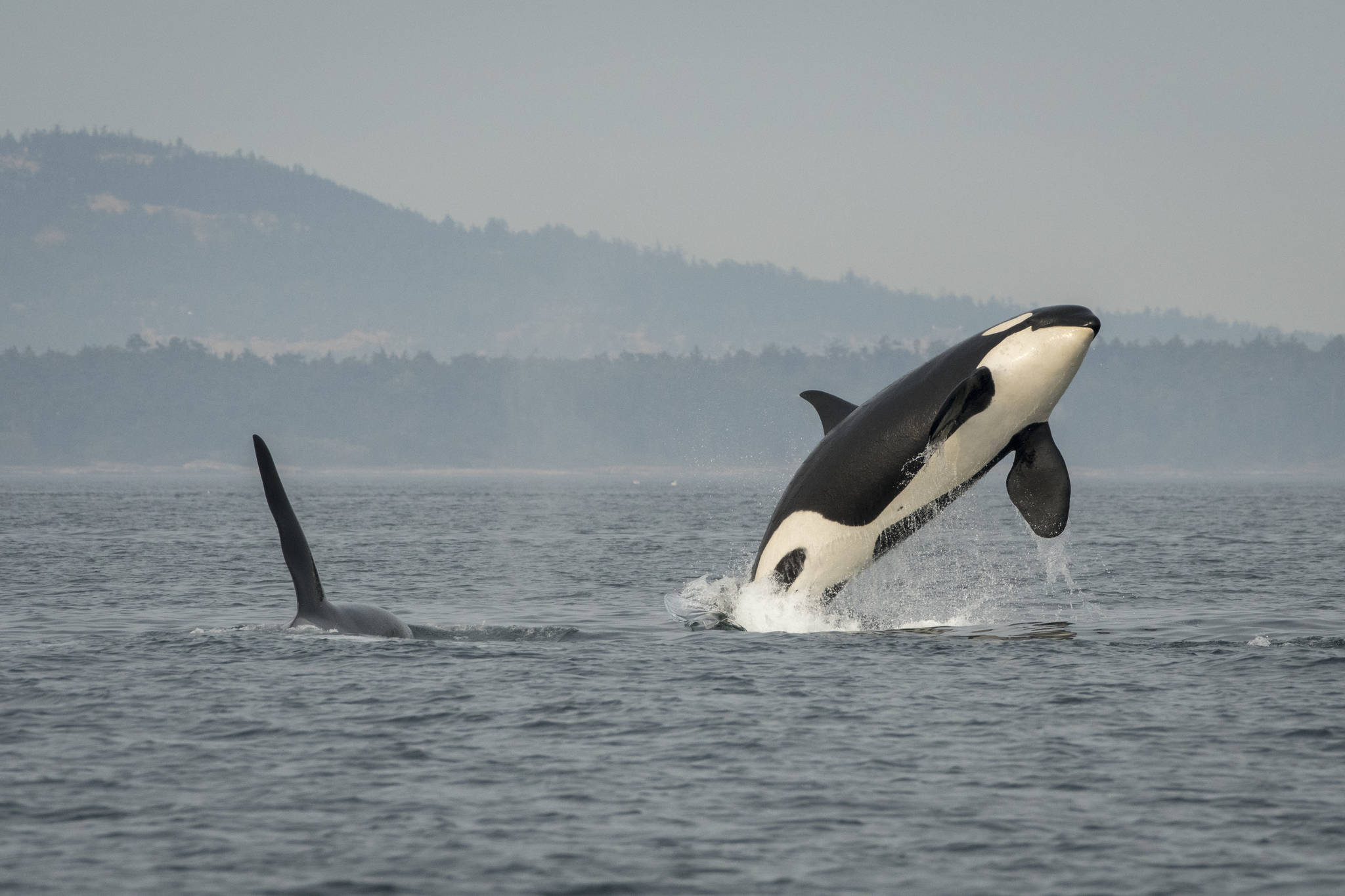The more we learn about the orcas, the less we know, according to Dr. Deborah Giles.
As one of five experts who spoke on the animals and ecosystems of the Salish Sea, Giles spoke on the current status of the Southern resident orcas at the eighth annual “Way of the Whales” workshop hosted by the Orca Network in Coupeville on Jan. 26.
Giles, who wrote her doctorate thesis on the Southern resident orcas and has been a lead researcher on them for years, said she is anxious to get back out in her boat with her scat-detecting dogs for the University of Washington’s Center for Conservation Biology.
“Everyone loves a pooping whale,” Giles said with a laugh.
The dogs have sniffed out more than 600 samples for researchers over the years. They’re able to detect the excrement from a half-mile away.
With the sample, scientists are able to identify the animal’s species, sex, reproductive status, stress hormones, nutrition and test for toxins, diseases and parasites. The Center for Conservation Biology’s research permit has been expanded to include baleen whales.
“I’m really excited about this because baleen whales are increasing in abundance,” Giles said. “We’ll be able to answer more broad ecosystem questions.”
She said scientists are still unsure what humpback whales – a type of baleen whale that lives in the Salish Sea – eat, so they’ll be able to find out with the new testing.
Testing the poop of transient orcas has proven difficult for researchers, Giles explained. She is eager to continue searching for their excrement.
“I don’t know what to say about the transients,” Giles said. “There’s just not a poop to be found.”
Though the transients eat other marine mammals and aren’t facing the same starvation problems that the Southern residents are, Giles said finding their scat is quite difficult. The working theory is that they poop at greater depths so it doesn’t float to the surface like that of the Southern residents.
Giles explained the history of studying orcas using digital acoustic recording tags. The National Oceanic and Atmospheric Administration discontinued the use of barbed tags on orcas following the death of L95 in 2016. The relatively healthy 20-year-old male orca apparently died from a fungal infection introduced through the tagging process.
“The amount of information these tags collect is outstanding,” Giles said. She added that tagging studies are set to continue but with technology having evolved from barbed tags to a new suction-cup style tag.
Friday Harbor Labs researcher Petra Ditsche, who has a Ph.D. in zoology, used clingfish technology to make a suction cup capable of sticking to the skin of an orca. She tested this theory on a piece of skin the lab procured from a deceased orca. The cup held for 24 hours on the sample skin and then an additional four months on the wall outside of the laboratory.
“I’m really excited about moving forward with this project,” Giles said.
She also talked about the status of J17, a Southern resident orca that was last seen in December. It was showing visible signs of starvation and reportedly not expected to live through to the summer.
“She’s an incredibly important animal,” Giles explained. “I cannot stand to think about what will happen to that family if she dies.”
She said that orcas are social animals with tight familial bonds. Once upon a time the J pod was considered the “most resident” of Southern residents, she said. The inland waters were full of food, but that has changed.
“That’s not the case now,” Giles said. “The very fabric of this population of whales is changing.”
Giles told of how there was cross-breeding between the three Southern resident pods historically, something only recently discovered when paternal tests were done on the orcas. She said that the more new information researchers learn about the orcas, the more they realize they didn’t actually know much about them. Scientists’ preconceived notions about “killer whales” are always changing, she explained.
Giles said she was delighted about the birth of a calf to the L pod. She added that it is a great family to be born into and that their limited numbers may be a benefit to the baby because there are fewer mouths to feed. However, she knows the statistics, which are that 50 percent of calves don’t make it through their first year.
“We’re hopeful that this little critter’s going to make it,” she said.



